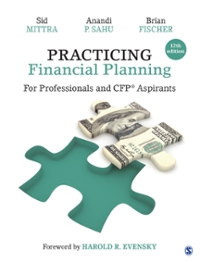It is current and quick ratio essay.
ACCT 230-30247 (Financial Accounting) Accounting Education Department Cornelia Alsheimer, PhD Chapter 2: page 68-69; Chapter 9: page 458, Chapter 14: pages 703, 708-709 FSA Assignment #5 (due Thursday 11/1/2012) CURRENT RATIO and QUICK RATIO Current Ratio = Current Assets Current Liabilities Quick Ratio (Acid Test) = \"Quick\" Assets__ Current Liabilities * Calculate the current ratio and quick ratio AT December 31, 2011 and December 31, 2011 for Skechers U.S.A., Inc. (SKX) and Steven Madden Ltd. (SHOO). * Your financial statement analysis must be in memo format. * You must present the formulas for the ratios. * Please indicate \"dollars in thousands\" if you are using the numbers as they are presented in the financial statements for both SKX and SHOO ... also, make sure to show dollar signs on amounts that are in dollars!! * Show your calculations (the numbers you used to get the ratios), including the amounts you added together (see below) to arrive at total quick assets. * Make sure that you are careful to use CURRENT assets and CURRENT liabilities in your computations of the CURRENT ratio!! * Make sure that you are careful to use only the \"QUICK\" assets and CURRENT liabilities in your computations of the QUICK ratio. Quick assets should ONLY include the following current assets: cash and cash equivalents, marketable securities, and receivables+. Note that a portion of each company's current assets is inventory, which is NOT included in \"QUICK\" assets. Therefore, the quick ratio is going to be lower than the current ratio. It should be - as the quick ratio is a more stringent test of liquidity (an \"acid test\") than is the current ratio! * Calculate the current ratio to the nearest one-hundreth and state it as, for example, \"1.58:1,\" or \"1.58 to 1,\" which indicates a company has $1.58 of current assets for every $1 of current liabilities. Calculate the quick ratio to the nearest one-hundreth, as well. State it as, for example, \"0.83:1,\" or \"0.83 to 1,\" which indicates a company has $0.83 of \"quick\" (most liquid) assets for every $1.00 of current liabilities. Analysis: * When analyzing a ratio, always indicate in the first paragraph of your analysis what the ratio tells us -- what does the ratio tell us, IN GENERAL, about companies? You can always refer to Chapter 14 in your text as another reference/resource. Additionally, please feel free to do a search on the internet for help. + Note that Steven Madden has a receivables position called \"Due from factor-net of allowances\" which - for the purpose of these ratios are treated the same as \"regular\" accounts receivables. * In the next paragraphs, analyze the the current ratio and quick ratio for each company. Be sure to analyze any changes in the ratios between years for each company, and the reasons for any changes. In the final paragraph, compare the ratios for both companies. Of course, comment on the differences in the ratios between the companies, as well. It's important that you look more closely into, and analyze, the assets that comprise current assets and the liabilities that comprise current liabilities in the current ratio in order to gain insight into the \"quality\" of the current assets (more or less \"liquid?\"), reasons for any differences between the two companies, as well as any changes between years in the ratio! Similiarly, it's important that you look more closely into, and analyze, the assets that comprise \"quick\" assets and the liabilities that comprise current liabilities in the quick ratio in order to gain insight into the reasons for any differences between the two companies, as well as any changes between years in the ratio! * Be careful in your analysis on the current ratio to not get lazy in your writing and use \"assets\" when you mean \"CURRENT assets\" and \"liabilities\" when you mean \"CURRENT liabilities\" in commenting on the current ratio results. Similiarly, be careful in your analysis on the quick ratio to not get lazy in your writing and use \"assets\" when you mean \"QUICK assets\" and \"liabilities\" when you mean \"CURRENT liabilities\" in commenting on the quick ratio results







